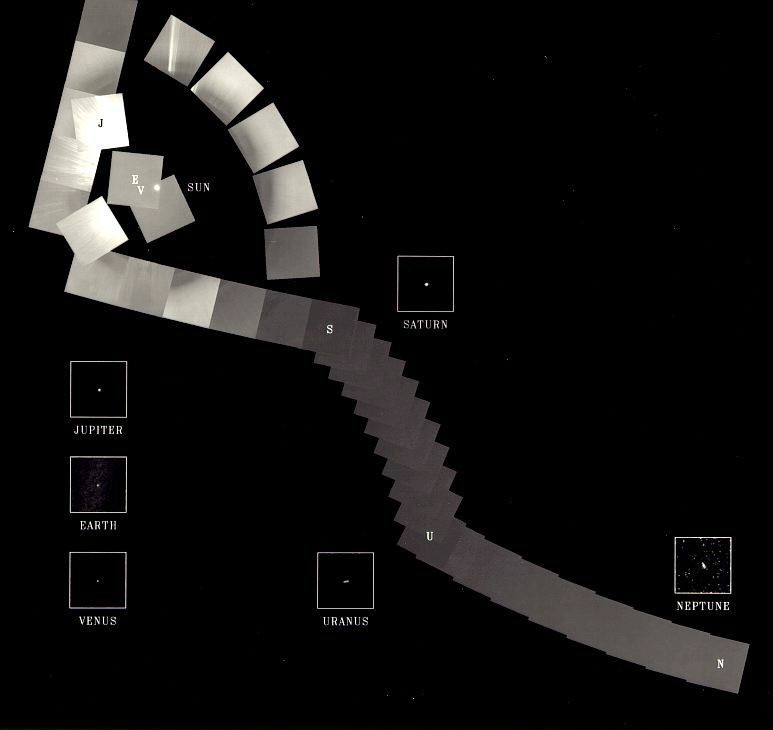It’s assumed to be Philolaus because Aristotle said that the counter-earth was introduced to bring the number of heavenly bodies orbiting the central fire to be ten. (Lots of backstory to all that, but not really relevant here.) Since that’s the astronomical model that Philolaus described, philosophers have generally credited him with the idea. (To keep from leaving a misunderstanding, the sun was not the central fire. The sun orbited the central fire just like the earth. It was believed that the earth’s bottom side always faced the central fire, and that’s what kept people from falling into space.)
A side question, if there were another Earth sized planet at L3, wouldn’t we also be in its L3 orbit? Thus making both planets’ orbits unstable?
No other planet in our Solar System shares the same orbit as another. Why should Earth be any different?
Unstable with each other, but they should still be relatively stable in their orbits about the Sun, with only relatively minor perturbations. Even if Htrae made a close pass of Earth (within their collective sphere of influence), it wouldn’t throw either of them out of solar orbit; indeed, it’s more likely that they’d eventually end up in their complementary L4/L5 points, although this configuration isn’t quite stable, either.
Stranger
This is, of course, one basic premise of the Gor book series. You could keep Gor hidden if its orbit was a mirror image of Earth’s, rather than following Earth’s path around the Sun, so that it is at perihelion at the same time as Earth. As to gravitational influences on other planets, it’s stated early on that Gor’s ruling species, the Priest-Kings, are able to control gravity, so no problems there. 
I’m not sure what this means. What does it mean for X to be “stable with” or “unstable with” Y?
Also, to be clear, are you saying the posts above that say there can’t be anything at the L3 point because it would be an “unstable orbit” are wrong?
-FrL-
Well, like my momma used to say, “Stable is as Stable does.”
None of the objects you see in the sky are in stable orbits, if you define stable narrowly enough. However, the are degrees of stability. In cases of larger objects, or objects that remain in relatively close proximity, the definition of stable is more readily apparent than in other examples. When your distance from Mercury varies, the affect of Mercury on your orbit changes with the square of the distance. But who really cares what percentage of the effect of Mercury is being felt, since it is, within such periods as ten or so human lifetimes, not perceivable by any means available during nine of those lifetimes.
However, in a close in system, such as Earth/Moon, or large body system, such as Jupiter/Sun the differences matter much more. Sixty degrees behind Jupiter there is an orbital position that is comparatively stable. Sure enough if you check there, there are some small objects that follow Jupiter around the sun. Mostly, they just roll along and dance around each other, with their puny gravitational fields having so small an effect that they don’t move out of the general position with respect to Jupiter, and the Sun.
There is a similar point in the orbit of the Earth and Moon that would allow a relatively stable orbit (Relative, meaning lasting more than one election cycle.) where we could station a satellite and have it pretty much be there when we looked back. Actually, there are several. Some of them are only stable when you are exactly in the right position, but any influence that moves you causes the motion to increase, and you leave the stable position. For some, small motions are dampened by the resultant gravitational changes.
So, stable means not changing enough to be a pain in the ass to observers, or folks hanging on in space.
Tris
A couple of years ago, one of the Voyager probes took a composite snapshot of the Solar System: here is photographic confirmation of a single Earth in Earth orbit:

Got it. 
-FrL-
The idea keeps popping up in fictioon. John Norman’s Gor, IIRC, was actually a “Counter Earth”. The idea showed up prominently in an amazingly dull and boring movie, Doppelganger, which was released in the US as Journey to the Far Side of the Sun. It’s almost certainly the one the OP wrote of. The incredibly clever idea was that the counter-Earth in that was a mirror image of Earth. That’s it. A tremendous waste of celluloid.
As for any real Counter-Earth, enough has already been written about its non-existence above.
I’m surprised that no one has mentioned Htrae’s Cybermen inhabitants, yet.
I wish I’d said that!
Most likely, if you tried to place an object at the counter-Earth point, it’d end up in a horseshoe orbit relative to the Earth, like the asteroid 3753 Cruithne. Cruithne is almost in the same orbit as the Earth, but at any given time, its orbit is either a little bit smaller than Earth’s, or a little bit larger. When its orbit is smaller, it moves a little faster than the Earth, and gets ahead of it in orbit. When it’s catching up from behind and is about to lap the Earth, the gravitational interaction between it and the Earth shifts its orbit a bit, so it’s now in a larger orbit (strictly speaking, it also shifts the Earth’s orbit slightly, but the Earth is much more massive, so the change is much smaller). With Cruithne in a larger orbit, it starts moving more slowly than Earth, so it falls behind again. Eventually, when the Earth is about to lap Cruithne, there’s another gravitational interaction which shifts the asteroid back into a smaller orbit, and the process repeats. Such an orbit is called a “horseshoe orbit” because, from the rotating frame of reference of the Earth moving around the Sun, the asteroid follows a horseshoe-shaped path.